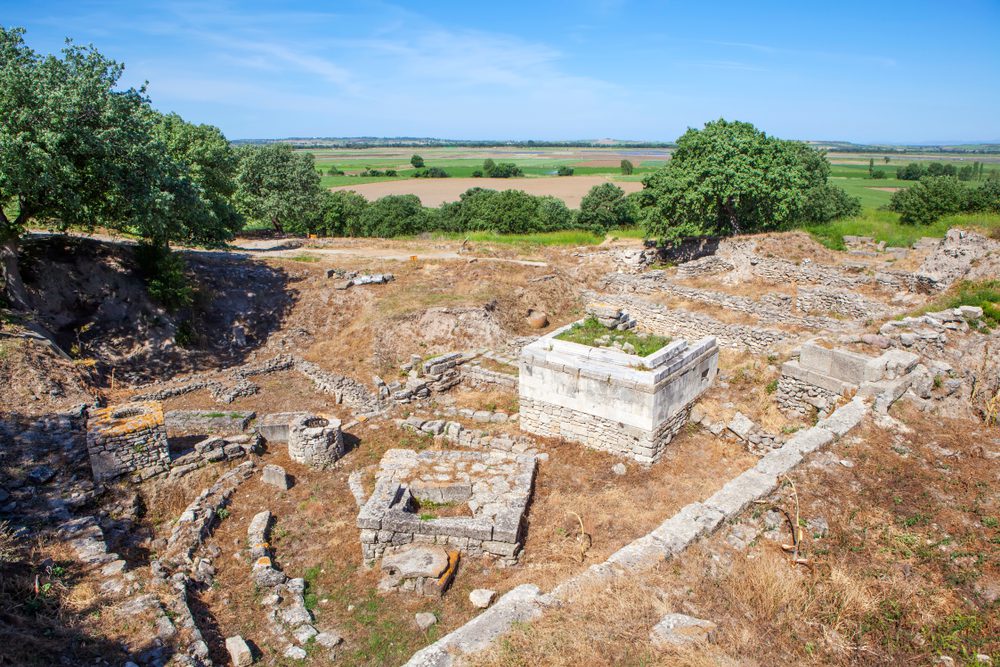Priam’s Treasure may be some of the most famed and controversial archeological relics ever recovered. The cache of gold and other stunning artifacts was discovered in the 19th century by German businessman and amateur archeologist Heinrich Schliemann, who professed they belonged to the ancient king of Troy from Homer’s epic poem Illiad. His claim, however, was not as straightforward as he hoped.
Schliemann found the ancient artifacts in 1873 at a site near the ancient city of Hisarlik, located on the northwest coast of present-day Turkey.
This was a period when historians were picking apart ancient texts and dismissing many of the events they spoke of as myths. In this school of thought, the Trojan War and the events of Homer’s Illiad were suspected to be fantastical legends, totally unproven by hard evidence.
According to Homer’s Illiad, the Trojan War began when Paris, the Trojan prince and son of King Priam, abducted Helen, the wife of the king of Sparta, Menelaus. In a heroic bid to retrieve her, Menelaus and his allies, including the famous warrior Achilles, sailed to Troy to retrieve Helen, sparking a 10-year war.
To this day, people debate whether this war actually happened. So, when Schliemann made the bold claim that Hisarlik was the city of Troy, many were doubtful. However, it turned out, he was correct.
Even more sensationally, his excavation work at the ancient ruins came across a treasure trove of artifacts, which he believed belonged to King Priam.

Ruins of the ancient city of Hisarlik in present-day Turkey. Image credit: Sergei Afanasev/Shutterstock.com
His account of the discovery goes as follows: “In excavating this wall further and directly by the side of the palace of King Priam, I came upon a large copper article of the most remarkable form, which attracted my attention all the more as I thought I saw gold behind it. … In order to withdraw the treasure from the greed of my workmen, and to save it for archaeology, … I immediately had lunch break called. … While the men were eating and resting, I cut out the Treasure with a large knife.”
Among the thousands of objects he discovered were ornate weapons, hundreds of pieces of gold jewelry, silver vases, copper cauldrons, and other precious objects.
However, his desire to link the objects to King Priam was a little fast and loose. The Hisarlik site contained layer after layer of ancient settlements, spanning from 3000 BCE to 500 BCE. His desperate bid to discover the Homeric Troy meant he rushed excavation of the upper layers, inadvertently destroying centuries of history
Furthermore, the layer that contained the so-called Priam’s treasure was not from the era of Priam and the Trojan War. The ruins of Homer’s Troy are located in the layer known as Troy VI level, while artifacts were discovered in Troy II, dated to around 2400 BCE, around a thousand years before the Trojan War.
In his quest for fame and fortune, Schliemann smuggled the objects out of Turkey and proclaimed he had discovered the exalted treasure of King Priam.
However, his hopes were misplaced. In a grim twist of irony, it transpired that Schliemann’s excavations actually ruined many of the layers that related to Priam and Homer’s Trojan. He had destroyed the very city he wished to discover.
“If you look on excavation maps, there’s a gap in the middle where it says ‘Palace removed by Schliemann. He got Priam’s palace and then threw it away. He found Troy, but he also destroyed Troy,” Eric Cline, professor of ancient history and archaeology at George Washington University, told the Guardian in 2017.
Source Link: Priam's Treasure: A Quest For Ancient Gold Helped Ruin The City Of Troy